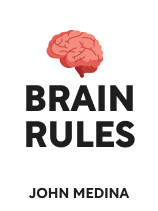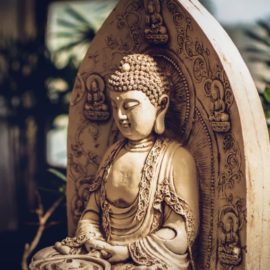

This article is an excerpt from the Shortform book guide to "Brain Rules" by John Medina. Shortform has the world's best summaries and analyses of books you should be reading.
Like this article? Sign up for a free trial here .
Why are sleep and the brain often grouped together in science? Why is the brain most affected by sleep?
In his book Brain Rules, Dr. John Medina emphasizes sleep as one of the main components of keeping the brain active and healthy. In Rule 3 of his guide to how brains truly work, he explains the importance of sleep and the brain’s reaction to it.
Let’s look at how the brain can benefit from sleep, and the negative effects of lacking sleep.
We Need Sleep to Think
Just as our brains benefit from exercise, we need sleep, and the brain will thank us for it. Sleep is an essential function of the brain which allows us to learn—and without sleep, our cognitive abilities suffer. Medina describes the biological processes that set our sleep schedules, the positive effects sleep has on our learning ability, and the negative effects that a lack of sleep can bring.
Our Internal Clocks
Our sleep, and the brain’s idea of the quality of that sleep, is determined by biological processes. We’re wired to stay awake and go to sleep in predictable cycles. If these cycles are disrupted, we can get less sleep and our brain will suffer, along with our cognition.
The process that keeps us awake is called the circadian arousal system, or Process C. The process that keeps us asleep is called the homeostatic sleep drive, or Process S. These two processes are constantly active and fighting against one another, leading to a predictable pattern of waking and sleeping—generally for about eight hours of sleep at night and about 16 hours of wakefulness during the day. Researchers William Dement and Nathaniel Kleitman found that the process of waking and sleeping is governed internally by these processes, rather than by external factors like whether it’s light or dark outside.
| Light Does Affect Our Sleep Cycles While Medina notes that our sleep cycles aren’t affected by whether it’s light or dark outside, other evidence shows that light has a significant effect on our patterns of sleep and the brain’s function. Our internal clocks are controlled by a part of the brain that responds to light and dark signals. So, when we see light, our brains release hormones telling us to be alert, and when we’re in darkness, our brains release hormones that start the sleep process. As a result, exposing yourself to artificial light at night, such as a cell phone or TV, can make it difficult to sleep, and keeps you from experiencing the benefits of sleep on the brain. However, despite its importance to our sleep instincts, scientists agree that light isn’t the only reason we have consistent sleep cycles. We’ll discuss later in the chapter how Process C and Process S often make us sleepy in the middle of the day. |
People Have Individual Sleep Types
While everyone’s sleep schedule is controlled by these processes, the timing of the processes is unique to each individual. Medina identifies three different types of sleepers, based on when in the day they naturally function best: He calls them larks (early risers), owls (“night owls”), and hummingbirds (who are in-between the two). Even though all of these types have different sleep schedules, they can still gain the same sleep benefits for the brain if they keep to a consistent schedule.
Early risers tend to wake up around 6:00 AM, and peak in energy and focus by noon. They get sleepy as the day goes on, and might want to go to sleep around 9:00 PM. They form about 10% of the population. Night owls are the opposite of early risers, tending to wake up after 10:00 AM, peaking in energy in the evening, and likely going to sleep around 3:00 AM. They also form about 10% of the population.
The remaining 80% are “hummingbirds,” or in-between sleepers. These sleepers aren’t as strongly biased toward the morning or the evening as early risers or night owls. However, all in-between sleepers will still show tendencies toward one or the other—a lark-ish hummingbird might wake up at 7:30 AM every day and feel sleepy by 10:30 PM. An owl-ish hummingbird might get up at 9:30 AM and go to sleep at 1:00 AM.
Contemporary Life Works Better for Some Types of Sleep and the Brain
Because everyone has their own sleep type, our society’s often-inflexible working hours cause many people to sleep poorly. In American society, for example, many people’s work schedules require them to work from early morning to early evening.
This type of schedule works best for a lark’s sleep and their brain function, since it allows them to go to bed early and wake up early. But, if you’re a night owl, you might find that your sleep type runs against the standards of contemporary society. As a result, owls might accumulate a “sleep debt,” meaning they lose sleep so consistently that it’d take a long time to catch back up again. “Owls” can suffer cognitive difficulties as a result, and their brain’s health will gain no benefits from their sleeping pattern.

———End of Preview———
Like what you just read? Read the rest of the world's best book summary and analysis of John Medina's "Brain Rules" at Shortform .
Here's what you'll find in our full Brain Rules summary :
- An explanation of how the brain works in a simple and accessible way
- The 12 rules that help fulfill the core functions of the brain
- How to improve your thinking and learning abilities






